Lori Robinson's Blog
November 4, 2025
Leopards in Africa: Masters of Shadow
The leopard is Africa’s most mysterious big cat—strong, elusive, and endlessly fascinating. From dragging prey three times its weight into trees to silently stalking small birds in the grass, leopards in Africa are masters of survival.
Despite being the most numerous and widespread of Africa’s big cats, leopards are also the most elusive. Although equally at home in savannas, riverine forests, rocky escarpments, and even the edges of villages, they seem to melt into shadows. To manage expectations, I used to forewarn my clients that they would be very lucky if they saw a leopard. While you can find leopards in Africa almost anywhere, now I know the best places to actually see them. South Luangwa National Park in Zambia, Londolozi in South Africa, and the Maasai Mara in Kenya—destinations where guides know their territories and habits intimately, and the big cats are extremely comfortable with safari trucks.
When you do see one, the moment is unforgettable. To stare into the eyes of a leopard is to feel connected to something ancient—wildness distilled. To watch a cub perched nervously in a tree, waiting for its mother to return from a hunt, is to glimpse tenderness within the predator’s world. Here is the cutest video of a cub exploring our safari truck, seeing its reflection in the windshield.
To follow a leopard as it rises at dusk, stretching into the coming night, is to understand that the dark hours belong to them. Leopards are nocturnal, yet in recent years, they are more often seen in daylight, their secret lives slipping more into ours.
Leopards boast the most varied diet of any big cat. Opportunistic by nature, they will hunt and eat almost anything that moves—from small birds (I’ve seen a leopard catch a bird in flight) to mammals three times their weight. Though they prefer hunting fresh, they are not above scavenging when the chance arises, adjusting their meals to whatever prey their habitat provides.
Along the banks of the Chobe River, where most travelers expect elephants and hippos but not Africa’s great predators, a ripple of spotted gold emerged from the reeds, and one of my clients took a video of a leopard ambushing an iguana. It’s an unusual prey in an unexpected place. A vivid reminder that leopards are the ultimate opportunists, thriving wherever there is cover and something to hunt.
We often picture leopards in their signature pose—muscles rippling as they ascend a tree, dragging prey three times their weight into the safety of the branches. It’s a display of raw strength wrapped in elegance, unmatched by any other big cat. Yet most of their meals are far humbler: small birds, rodents, or rabbits snatched from the grass and eaten in silence, unseen by all but the sharpest eyes.
It is this adaptability that allows leopards to slip into places no other big cat could. More than lions or cheetahs, they are capable of living on the edges of human settlements, surviving on rabbits, stray dogs, or even birds. In such places, they remain shadows—rarely seen, blending seamlessly into their surroundings, ghosts of the wild in the urban world.
Leopards live solitary lives, except for fleeting encounters during mating season or the sweet companionship of a mother with her cubs. In their solitude lies their strength. They need no pride, no coalition. They are the quiet masters of their domain, thriving where others falter.
Leopards in Africa are elusive, adaptive, powerful. Always there, even when unseen.
The post Leopards in Africa: Masters of Shadow appeared first on Saving Wild.
October 30, 2025
Becoming The White Masai
While reading The White Masai several years ago, I was shocked by the author’s decision to leave her home in Germany to marry a Masai man and acclimate to his culture and way of life. Honestly, I questioned her sanity.
The Masai’s way of life represents simplicityUltimate minimalists, the Masai are part of the land and animals and connected to the earth in ways we in the modern world no longer are. They build with dung and mud, sleep on goat-skins, and drink blood and milk. They spend their time outside under the sky, entering their homes mostly to cook and sleep. They walk miles to visit friends in nearby villages and collect water carried on the backs of donkeys.
They generally have no TVs, no books, no chairs, no toilets, no lights. The children play games with sticks and rocks in the dirt, the men light fires from dust, and the women bead beautiful jewelry for their husbands.
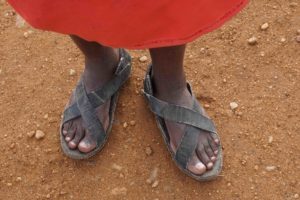
Trading shoes with Daniel, my Masai guide.
Daniel doesn’t like my flip-flops, “the thorns will push right through the bottoms,” he says. His sandals, made from old rubber tires, are the only shoes he’s worn for the past seven years. “They will last another seven,” he tells me.
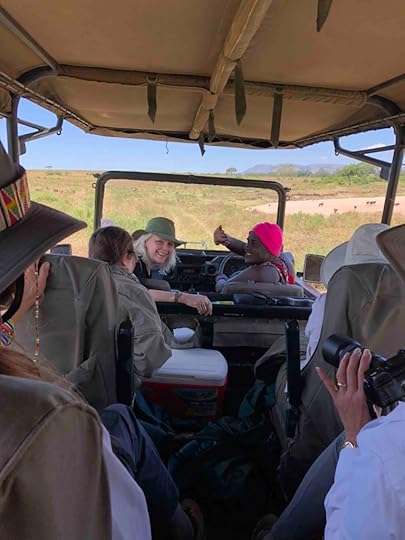 Daniel and me co-guiding my group on safari in the Masai Mara.MASAI ARE GREAT GUIDES.
Daniel and me co-guiding my group on safari in the Masai Mara.MASAI ARE GREAT GUIDES.Daniel works as a safari guide in the Masai Mara, Kenya’s most popular wildlife park. He grew up on this land. As part of his initiation into warrior status, he lived with his peers for three years in the bush, sleeping under stars and eating plants and occasionally meat. He learned life-long survival skills, including protecting himself from lions, elephants, and buffalo.
Listen to Daniel Sing the Lion Warrior SongIt is truly amazing!
He is the best wildlife spotter I’ve hired during the 18 years I’ve been leading safaris to Africa. From miles away, he sees lions that I can barely spot through my binoculars. He knows what an animal is about to do. He maneuvers his truck away from the pack of safari vehicles suffocating each other around a wildlife sighting, correctly anticipating when the animal will move away to drink water, climb a tree, or try to hunt.
Of all the indigenous tribes in the world, the Masai have a reputation for holding onto their culture despite the government’s desire to change them.
I show Daniel photos of America, and he tells me he has no interest in going there. “Four-lane roads and tall buildings,” is how he describes my country.
I’m drawn to Daniel. It’s a soul attraction. A connection to the minimalist side of me that is forever intimately tied to the natural world. I no longer question the decision of the author of The White Masai to exchange her world for theirs (although spoiler alert – it didn’t work out).
The post Becoming The White Masai appeared first on Saving Wild.
October 20, 2025
Lewa Wildlife Conservancy – A Success Story
The Lewa Wildlife Conservancy occupies a relatively small 62,000 acres in northern Kenya but its role as a conservation innovator extends far beyond its borders.
The Conservancy and surrounding areas contain some of the last pristine biodiverse wilderness in Kenya, most of which is in community-owned land. Therein lies the conservation challenge, as well as Lewa’s success through combining wildlife protection, community development, and sustainable tourism.
I began leading safaris to Lewa a few years ago and, because of its uniqueness to other parks, I have since made it a must visit destination on all of my Kenya itineraries.
On my last visit I sat down with Lewa Wildlife Conservancie’s co-founder, Ian Craig, whose story is one of twenty in my book, Wild Lives. Here are some highlights from my interview.
 What a pleasure to be able to spend time with Ian Craig in Lewa for my book, Wild Lives.
What a pleasure to be able to spend time with Ian Craig in Lewa for my book, Wild Lives.“Lewa was envisioned to act as an anchor that demonstrates and facilitates community-centric-conservation,” says Ian. For example, Lewa released black rhino into the nearby Sera Community. Although native to that area, the black rhino had not been seen there in over 30 years. Sera made history as the first community in Kenya to be responsible for managing a viable black rhino population. “This model of conservation offers a viable way of life for communities that share their land with wildlife by empowering them through community programs,” says Ian.
Expanding on the Lewa model, Ian started the Northern Rangelands Trust. It promotes the collective management of ecosystems for improved human livelihoods, biodiversity conservation, and enhanced rangeland management to over 2 million hectares.
 Ian Craig working with Community leaders. Photo courtesy of Juliet King.
Ian Craig working with Community leaders. Photo courtesy of Juliet King.This is all great news for the area’s wildlife, which includes the endangered black and white rhino, reticulated giraffe, hirola, Grevy’s zebra, and the shy sitatunga antelope. They are not only protected in these rangelands, but can also migrate with less conflict.
 Photo of Hirola courtesy Kenneth Coe
Photo of Hirola courtesy Kenneth CoeThe elephant underpass is another example of Lewa/NRT’s innovative projects. A one-of-a-kind in Kenya, the underpass links the forest ecosystem of Mount Kenya with the savannah ecosystems of Lewa and Samburu. Previously, this historic migration route was blocked by human development. Now elephants and other wildlife use the underpass to cross the busy highway that stretches from Meru to Nanyuki.
Ian Craig was born in Kenya. To learn more about how Ian is shaping Kenya, and how Kenya shaped Ian, check out his adventure-filled life story in Wild Lives, Leading Conservationists on the Animals and the Planet They Love.
To experience Lewa Wildlife Conservancy first hand, send me an email to lorisavingwild.com and I will help you include it in a life changing safari.
The post Lewa Wildlife Conservancy – A Success Story appeared first on Saving Wild.
October 10, 2025
How to Take Great Safari Photos – for Amateurs
Though I’ve been traveling to Africa for almost 40 years, I’ve never paid much attention to how to take a good safari photo. Point, shoot, and pray has been my photographic motto. But, along the way I received tips and advice on how to take great safari photos from famous wildlife photographers like Tom Mangelson, Henry Holdsworth, Chris Martin and more.
Although I’m still an amateur, my photos have gone from blah to wow. From something I would eventually delete to something I’m proud of.
I’ve compiled the top easy to do tips here so that you can capture better memories from your safari.
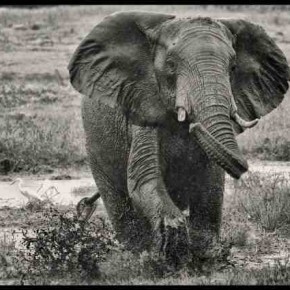 Chris Martin Photo
Chris Martin Photo6 Tips on How to Take Great Safari Photos:
1. Get familiar with the workings of your camera
This first suggestion is probably obvious, but half the people on the safaris I lead (including me) have not taken the time to know their camera.
Great photographers understand how to switch between functions almost blindfolded. Often you will need to make adjustments to your shooting settings while the animal is in the frame. That’s impossible to do unless you know the location of all the function buttons. This advice applies even if your main camera is your smartphone – get to know its camera functions.
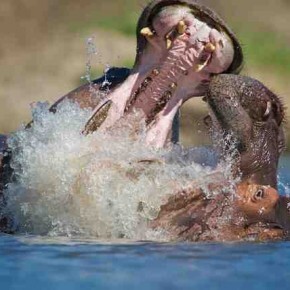 Chris Martin Photo
Chris Martin Photo
2. An image is nothing if it isn’t razor sharp
Forget post-processing and the sharpening tool. If you are sloppy with your focusing, your image will suffer. “This is probably the most common fault in most images I review,” Chris Martin told me. He suggests using a camera support: either a tripod, monopod or a bean bag (if shooting from a vehicle). “I rarely hand-hold a camera when working from my safari vehicle. When you settle into position on your sighting and are getting ready to shoot, turn off the engine, as even the vibrations of the vehicle can potentially ruin a great shot,” he cautions. Remembering only this one tip will help you take good safari photos. FYI, most good safari vehicles offer bean bags for photographers.
3. Get dirty – shoot from low down
If you have studied great wildlife photos you will notice they seem to have a unique perspective.
We are accustomed to shooting from above – a position that is generally unflattering. But paying attention to perspective will drastically change your photo. When you can, shoot from below the eye level of your subject. Try it, and you will see the difference.
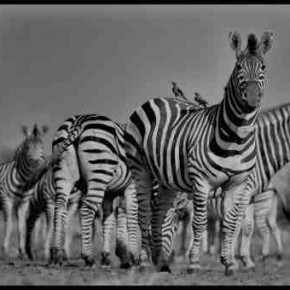 Chris Martin Photo
Chris Martin Photo
4. Consider all three of these things : foreground, background, and horizon
Always look at the space behind your subject to see what else is in the image (do the same for the foreground). Consider whether you want the background to be in focus, or blurry. Be careful of sticks, branches, etc in your foreground that could “grow out” of your image and potentially ruin your shot. Finally, if there is a horizon in your composition, make sure it’s straight.
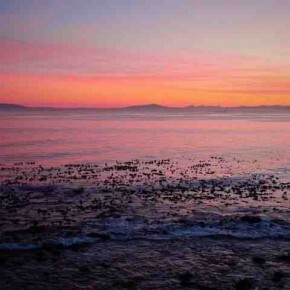 Chris Martin Photo
Chris Martin Photo
5. Grab your first shot … and compose your second
Wildlife is unpredictable so most professional photographers I talked to suggest we immediately take a photo of what is in front of us without worrying about how to take a great safari photo. (Even if the animal flees or turns, you have at least one photo of it). Once you have captured the image, THEN begin consider composing your photo more creatively, using as many pf these tips as you can.
This next tip is a game changer for taking a great safari photo6. Make the animal’s eye your focal point:
The expression from an animal’s eye can make or break a safari photo. You should not only have the eye as your primary focal point, but you should also try to use the available light to highlight their eye or eys. This tip will ensure your image stands out. Now that you know this tip, you will begin noticing the eye is always the sharpest point of any world-class wildlife image.
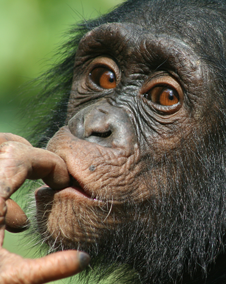
I design the photo safari workshop itineraries for Jackson, Wyoming wildlife photographer Henry Holdsworth. If you want to practice all these tips and learn from one of the best on how to take great safari photos you can join him on a safari photography workshop.
To learn more about his next photographic safari in Africa, contact me, LoriSavingWild@gmail.com
The post How to Take Great Safari Photos – for Amateurs appeared first on Saving Wild.
October 5, 2025
Baby Jane Goodall’s First Adventure
On an April day in 1934 a new mother was discharged from a London maternity home, along with her baby girl. Deeming her husband’s Aston Martin race- car too dangerous to transport their firstborn, she enlisted the help of a friend, the owner of a more sedate vehicle. It was my grandfather, Denis Robinson, who conveyed them safely home that day, an act emblematic of their friendship. But no one could have predicted that the baby clasped so carefully in her mother’s arms in Grandpa’s back seat, baby Jane Goodall (Valerie Jane Morris-Goodall), would grow up to be one of the world’s most famous conservationists.
Jane Goodall skyrocketed to fame at 29 in the August 1963 issue of National Geographic, captivating readers with her feature article, “My Life Among Wild Chimpanzees.” I was only a few years old at the time. But as a teenager, I occasionally accompanied my grandfather to functions honoring “Dr. Jane,” and like many women in my Baby Boomer generation, I idolized the courageous young British scientist living in the African bush.
Later, after my grandfather died, I spent several years working as the African Adventures Specialist for the Jane Goodall Institute, leading their high-level donors on safari in East Africa. And, it was a conversation with Dr. Jane, at one of her birthday parties several years ago, that planted the seed for my book, Saving Wild: Inspiration From 50 Leading Conservationists.
Dr. Jane has been my mentor as long as I can remember, and all I learned from her will be with me forever.
I would love to hear from you in the comments below. Lv,L
The post Baby Jane Goodall’s First Adventure appeared first on Saving Wild.
October 3, 2025
Becoming An Animal Communicator
I’m sitting in a circle of women (and one man) in a living room lined with overstuffed chairs, small porcelain replicas of cats and dogs, and flowered wallpaper. A golden retriever sleeps at my feet, and a tabby cat wanders the room looking for friendly laps. The instructor starts the beginners Becoming an Animal Communicator workshop with the obligatory question – What made you sign up for this course?
“I recently met a woman who says she’s an animal communicator,” I say. “Intrigued but too shy to ask what that even meant, I felt myself wishing I too could talk to animals and hear what they have to say back.”
I think it would be amazing to be able to talk to the elephants, cheetahs, and zebras in the groups I lead for my work as an African Safari Specialist. But I can’t imagine how to become an animal communicator.
“Truthfully, it seemed like the woman I met was part of a cult. I’m here purely out of curiosity,” I tell the others in the class. I’m completely clear that entrance to this cult of animal communicators belongs to a chosen few. And I’m not one of the lucky ones.
Carol, our teacher, doesn’t resemble what I imagine a professional animal communicator looks like. She is middle-aged and petite with no spiritual or otherwise woo-woo aura about her.
“Anyone can do this,” she repeats several times. “We all have this inside of us, we just need to reconnect to it.”
Becoming an animal communicatorAfter guiding the class through a couple of exercises to learn to listen to and trust our instincts and get out of our heads, Carol leads us in a visualization/ meditation through a meadow to a golden beam of light.
“This light is what we will use to communicate with the animal in the photo you are each holding,” she says.
I had given a photo of my dog Zia to a participant named Kristie, and she had given me a copy of a photo of her dog Ollie.
I stare at the black and white image of my ‘client’ Ollie, having no knowledge of him except his gender and name, and that he had recently died.
“Just write in your journal, without questioning anything, whatever comes to mind as you look at the photo you are holding,” Carol had instructed us.
For a few minutes, I stare into Ollie’s eyes staring back at me from the photo. I focus on blocking out my surroundings, looking as deeply as I can into Ollie’s eyes, until I have the sensation of being inside a capsule that holds only Ollie and me. I send him my beam of light.
Then I begin writing:
I miss morning time sitting on the blue sofa watching TV; I had a food bowl with little pictures of bones all over it; and I wore a red collar. Tell her it’s Ok to get another dog now…
Images and statements like these flow into my mind’s eye. I don’t question anything; I just write everything as it comes to me.
Thirty minutes later, Kristie and I sit across from each other, reporting on what we had written down. The purpose is to get validation, or not, about what each of us had received from the other’s animal companion.
“It felt like Ollie was there next to me,” I say, and begin with the blue sofa. I tell Kristi everything in my notes without making excuses or qualifying any of it, although I’m nervous that what I’ve written is a list of nonsensical, made-up statements.
Is Animal Communication Real?Kristie confirms each of the things I read from my notes and starts crying. I’m shocked.
That afternoon, I completed other readings from photos with three different owners and pets. Each time I’m watching (in my mind’s eye) the animal in its surroundings, behaving, and giving messages that are unique to them.
My mind searches to make sense of what’s happening. How is it possible to get this information from dogs and owners I’ve never met before this moment? Is it luck that I happen to get accurate messages?
Only after getting validation from each reading do I begin to understand that this couldn’t be lucky guesses. Something is happening that my rational mind can’t make sense of.
During a break in a private moment, Carol, the teacher, tells me she rarely sees someone in her beginning classes able to be as accurate as I am with my readings. Have I actually tapped into the innate ability we all have to become an animal communicator?
“Maybe because you spend so much time in Africa and grew up with so many animals, your abilities are still intact,” she says. “You should do this for a living,” she adds.
The following day, I call Carol, confused. “I feel like I’m in a trance. I’m not sure what happened to me, but I feel strange. Like I’m in a dream.”
In her down-to-earth, this is all normal sensibility, she validates my feelings, guides me out of my altered state, and presents a clearer picture of what working as an animal communicator would mean.
I have since studied with some of the top animal communicators across the globe and co-designed and taught a couple of classes with Carol that include a section on communicating with wild animals.
I’ve come to understand that what the animal and I are using to connect is a Universal language. It’s the way animals communicate all the time. Their default. But for us humans, it’s our least familiar way. We are born knowing it, but lose our ability (and belief in it) as we become acculturated. Training helps us remember.
Yet still, years later, before each session I have with an animal, I question my ability. I worry whether it will work this time, and whether I am making up the information that comes to me.
It’s only when the owner validates what I learned in my session from their animal companion that I allow myself to trust the process.
When I tell people I’m an animal communicator, I often get a strange look. I’m assuming they think I’m part of some woo-woo cult. And that’s just fine with me.
Want more about animal communication?– Read my post about a session I did with a chicken named Butter.
– Schedule a session for your animal companion.
The post Becoming An Animal Communicator appeared first on Saving Wild.
October 2, 2025
The Jane Goodall Effect Lives On
Hoot-hoot-hoot-hoot, the sound rose from the shadowed forest, echoing across the humid air of Gombe.
Sitting around a bonfire on the shore of Lake Tanganyika my safari group froze mid-sip, eyes scanning the dark green wall of trees for the chimpanzee.
Hoot, Hoot, Hoot – a second pant-hoot—clearer, closer—threaded with the unmistakable warmth of human mischief.
“It’s Jane! It’s Dr. Jane, isn’t it, Lori?” someone in the group uttered, their voice trembling with awe.
I kept my smile to myself, letting their anticipation grow. Then, slipping from the edge of the forest into the glow of the firelight, Jane Goodall appeared. The donors erupted in applause and laughter, some reaching for cameras, others too stunned to move.
I could relate. Even after all the years I’d known her, and now working as the African Safari Specialist for her Institute, I was still awe-struck in her presence.
Her voice was soft and measured, yet she was formidable. She was always on mission, her attention fixed on what needed protecting, what needed changing, what needed saving. Her every word carried the weight of relentless focus. At dinner with her donors, she would lift her hand toward the mountains of Gombe, eyes traveling to where the forest once stretched, unbroken. “When I first arrived, it went on for miles,” she’d say, her tone equal parts wonder and grief. Each year, she watched it shrink. That loss shifted her life’s work from observing chimpanzee behavior to defending their home.
“If we don’t save the forest where the chimps live, we can’t save the chimps.”
Once, I asked her, “How do you keep going despite all the challenges?”
“I don’t give up,” she said simply.
That sentence lodged in me like a seed. Even when my own efforts at helping animals felt small—a ripple against a tide—I understood that not continuing was not an option. It wasn’t about winning; it was about staying in integrity with who I am.
Bringing people to Africa was one way of helping. Over and over I witnessed how being on safari opened people’s perceptions and deepened their devotion to the wild and the need to preserve it. It was my way of expanding the tribe of people who cared about saving our planet and all its creatures. It was a small role, but it was meaningful to me.
The Jane Goodall Institute’s work with local communities—coffee farms under the shade of forest trees, clean water wells, micro-loan programs—showed my clients and me that conservation wasn’t abstract. It was personal. Many donors wrote checks on the spot; others gave more when they returned home.
Having Jane join us at Gombe was a rare treat. Her schedule rarely aligned with mine in Africa. That meant I often represented the Institute in her stead – an encouraging presence. I visited Roots & Shoots programs across East Africa – speaking on behalf of Jane and her organization, praising project leaders, planting trees in barren schoolyards. Sometimes, I felt Jane’s presence beside me, buoying my efforts.
Once, I was even mistaken for Jane. At Nairobi’s Norfolk Hotel, after checking in my safari group under The Jane Goodall Institute, staff swarmed me with offers: “Would you like a drink? Something to eat? On the house?” I noticed people staring at me. Having just returned from the bush, I was still in dust-covered safari clothes, my blonde hair pulled back in a ponytail. At first, I thought I stood out in the genteel lobby because of my disheveled appearance—until someone reached out their hand and said, “It’s so wonderful to meet you, Dr. Jane.”
Oh.
For one fleeting second, I allowed myself to bask in the glow of adulation meant for her and all she had done for the animals and people of Africa. And then, reluctantly, I let them down.
Back in the States, I met with Jane whenever I was invited. Between her meetings with African presidents, wealthy philanthropists, and Hollywood stars—“Your time with Jane is up because Warren Buffett’s grandson is waiting in the lobby,” or “Sorry, Jane is late because she’s still with Cameron Diaz”—we would share visions and ideas for my future tours and ways I could contribute to her work.
Jane is what Martha Beck calls a ‘Wayfinder’. She was tireless, propelled by a calling. Since childhood, she never strayed from her purpose—to help animals. It was the guiding force behind every decision she made. I deeply admired that about her. Her stories always inspired, her passion ignited, and just being around her made me more determined than ever to help animals in any way I could.
Jane’s work cast a wide effect of good across the world. In my meager way, I will continue to be inspired by her in all I do. Thank you, dear Jane Goodall.
**I would love to hear your feelings about Jane or this tribute in the comments below.
Lv,L
The post The Jane Goodall Effect Lives On appeared first on Saving Wild.
September 10, 2025
Connection With Elephants
Elephants are the animals everyone longs to see on safari. They’re endlessly watchable — splashing in mud, nursing their young, rubbing against trees. But what draws me most is not their size or their antics. It’s the deep connection with elephants I feel everytime I’m in their presence.
“Elephants are like us, but better,” Daphne Sheldrick once told me. She was right. They radiate a presence that’s both powerful and gentle, grounded yet deeply aware.
Months before a safari I was leading in Kenya, I had a vision: five elephants running toward me and my group. I didn’t know what it meant. The day we arrived in Amboseli, I saw them. Five gray shapes moving steadily across the shimmering lakebed. They ignored the other safari trucks and surrounded ours instead, close enough to touch. My travelers looked at me, silently asking, Is this safe? I smiled, tears streaming down my face. I knew. This was a welcome — a first greeting for them, a homecoming for me.
Later, at a waterhole in Lewa Conservancy, I had a connection with elephants that astonished me. The elephants lifted their trunks, gathering our scent. I stayed still, heart open, sending them peace. Suddenly, my whole body shook with a chill — teeth chattering, skin buzzing with electricity. They hadn’t touched me physically, but energetically. It was like a tuning fork striking every fiber of my being. In that moment, something inside me shifted. I knew I had been changed.
That’s what connection to elephants does. It doesn’t just touch you, it transforms you.
I’ve seen them return year after year to the bones of their dead, lifting them with reverence. I’ve walked beside a rescued elephant in Botswana, her trunk resting trustingly in my hand. I’ve felt a bull’s gentle exhale against my cheek — the best kiss I’ve ever had.
Each time, I leave with the same quiet truth: my connection with elephants makes me want to be more like them. Calm. Loyal. Present.
And yet, each day, about a hundred fewer elephants roam the earth than the day before. From 10 million a century ago, there are now only about 35,000 left in Africa.
Without elephants, Africa would lose its heart. And so would I.
This blog post is adapted from a chapter in my forthcoming memoir. It’s Eat, Pray, Love meets Born Free — an honest, vivid, and at times unexpectedly funny story of courage, intuition, and returning home: to the earth, to the wild, and to oneself.
The post Connection With Elephants appeared first on Saving Wild.
September 1, 2025
Avoid Common Safari Planning Mistakes – Use a Safari Specialist
Planning a safari in Africa often starts with a dream – seeing elephants crossing the savannah, lions at dawn, or hearing the thunder of the Great Migration. Realizing that dream means avoiding common safari planning mistakes.
But what many first-time travelers don’t realize is that safaris are not like booking a weekend city break or a European holiday. Africa is vast, the logistics complex, and the difference between a life-changing journey and a frustrating one often comes down to whether you have the right guidance from the start.
With hundreds of safari operators, lodges, and itineraries to choose from, the number of options online can quickly become overwhelming. From picking the wrong season to misjudging travel logistics, DIY safari planning can turn a once-in-a-lifetime adventure into a stressful, or worse, disappointing experience. I’ve helped so many clients refine and edit what they thought was a good DIY itinerary, helping them avoid common safari planning mistakes – turning what would have been a mediocre experience into a trip of a lifetime.
That’s why working with professional operators – ones that specialize in African safaris isn’t just a luxury—it’s essential. With expert advice, insider knowledge, and a deep understanding of what makes a journey of a lifetime, a specialist ensures your African safari is safe, seamless, and unforgettable.
As someone who has spent almost four decades traveling across Africa’s wild spaces and planning safaris for clients, I can tell you this with certainty: don’t plan your safari without professional guidance. Here’s why.
1. Africa Is Not One Destination“Africa” is often spoken of as if it’s a single destination, but it’s a continent of 54 countries, each with distinct ecosystems, wildlife, and cultural experiences. A safari in Botswana is nothing like one in Kenya, Uganda, or South Africa. Even within one country, timing and location can mean the difference between seeing abundant wildlife and staring at empty landscapes. A professional will help you match your dream—whether it’s gorilla trekking, tracking big cats, or exploring untouched wilderness—to the right region and the right season.
2. Timing Is EverythingSafari veterans understand timing is everything. It makes the difference in whether you will witness vast numbers of animals or be searching for a few. Some reserves are at their best in June, others in November. Book at the wrong time and you could miss the very spectacle you traveled halfway across the world to see. Safari Specialists understand the patterns, the seasonal weather, and local changes ensuring you’re in the right place at the right time.
3. The Logistics Are Far More Complex Than You ThinkDistances between reserves can be huge, and flight connections don’t always run like clockwork. Roads in remote regions may not exist in the way you imagine. What looks like a short hop on a map could take a full day of overland travel. An experienced planner knows the realities on the ground, helping you avoid exhausting itineraries and wasted time.
4. Safety and Comfort Depend on Local KnowledgeFrom navigating border crossings to knowing which camps are genuinely well-run, insider knowledge is invaluable. Safari Specialists work with trusted local guides and operators who prioritize safety and sustainable practices. This isn’t just about avoiding discomfort—it’s about ensuring your trip supports conservation and communities rather than harming them.
5. The Best Safari Experiences Are Hidden GemsThe internet will show you the same big-name, popular lodges. But many of the most memorable safari experiences—remote mobile camps, community conservancies, and hidden intimate gems are harder to find. Safari Specialists who spend time on the ground in Africa can recommend unique experiences that will truly set your trip apart.
6. A Safari Is an Investment in Memory, Not Just MoneySafaris aren’t cheap. You want to return home feeling you got the absolute best from the experience. Using a safari specialist helps protect your investment, making sure your trip is tailored to your interests—whether that’s photography, adventure, luxury, or family bonding. The value isn’t just in what you see, but in how seamlessly it all comes together.
A safari isn’t just another holiday—it’s a once-in-a-lifetime journey. Without professional guidance, you risk missing out on the very magic you hope to find. If you’re serious about experiencing Africa in all its richness, don’t DIY your planning.
Get started with a one-hour phone consultation with me.
The post Avoid Common Safari Planning Mistakes – Use a Safari Specialist appeared first on Saving Wild.
August 20, 2025
Kenya Parks and Conservancies: Key Differences for Safari Travelers
Kenya parks vs conservancies
When most travelers dream of a safari in Kenya, the Maasai Mara usually tops the list. This world-famous reserve is home to breathtaking wildlife, the dramatic river crossings of the Great Migration, and iconic African landscapes. But there’s another option many people don’t know about: the private conservancies that border the Mara. Both offer unforgettable safari experiences—but they’re very different. Here’s what you need to know before you go.
The Maasai Mara National Reserve (The Park)
Kenya’s parks, including the Maasai Mara, are managed by the Kenyan Wildlife Service (KWS) Reserve and are open to anyone who pays the entrance fee.
What to expect:
Crowds at sightings: The Mara is famous—and busy. During high season, it’s common to see 20+ vehicles gathered around a single cheetah or lion hunt.Epic migration scenes: The largest, most dramatic wildebeest river crossings happen inside the Reserve, along the Mara River. This is where you’ll witness the raw, heart-stopping drama of bloated crocodiles awaiting the stampeding migrating herds.Access for all: Lodges, camps, and tour operators from budget to luxury accommodate guests here, making the area more congested.Revenue flow: Park fees go to the county government, but less directly to local Maasai communities.Best for: Visitors who want to witness the Great Migration river crossings and don’t mind larger crowds. Also visitors looking for budget friendly safari options.The Conservancies (Community Conservation Areas)
Bordering the Reserve are community-owned conservancies such as Olare Motorogi, Naboisho, Mara North, and Ol Kinyei. These lands are leased from Maasai families and managed in partnership with safari operators.
What to expect:
Exclusivity: Only guests staying in a camp or lodge inside a conservancy can take wildlife drives there, limiting the amount of vehicles roaming the area. At most you will share a wildlife sighting with a couple of other vehicles. But, this exclusivity comes at a price: higher lodging fees compared to places inside the Parks.Close encounters: Because of lower traffic, wildlife here is less stressed and more relaxed. You’ll often find lions lounging under your vehicle’s shade or elephants strolling through camp.Community benefits: Lease fees go directly to Maasai landowners, creating income that incentivizes conservation.Activities not allowed in the Parks: Conservancies often allow night drives, walking safaris, and off-road driving, giving you options for your wildlife viewing experience.Best for: Travelers who want exclusivity, fewer crowds, and the satisfaction of directly supporting local communities and conservation.
Key Differences of Kenya Parks vs Conservancies at a Glance
Place Parks (Reserves)ConservanciesManagementGovernment runMaasai community partnershipsAccessOpen to all with entry feeOnly for camp/lodge guests within the conservancyCrowdsHigh, especially in migration seasonlimitedMigration River CrossingsThe Mara River runs inside the Mara ReserveYes, but not at the Mara RiverActivitiesDaytime game drives onlyNight drives, walks, off-roadCommunity BenefitIndirectland lease payments & jobs for the Maasai peopleSo Which Should You Choose?
The truth is, you don’t have to pick one or the other. I often combine both Kenya Parks and Conservancies in the itineraries I create for clients . Spend a couple of days in the Park to witness the Great Migration river crossings. Then retreat to a conservancy for tranquility, privacy, and deeper connection with wildlife and the Maasai community.
Together, Kenya Parks and Conservancies create one of the most unforgettable safari journeys in Africa.
The post Kenya Parks and Conservancies: Key Differences for Safari Travelers appeared first on Saving Wild.



